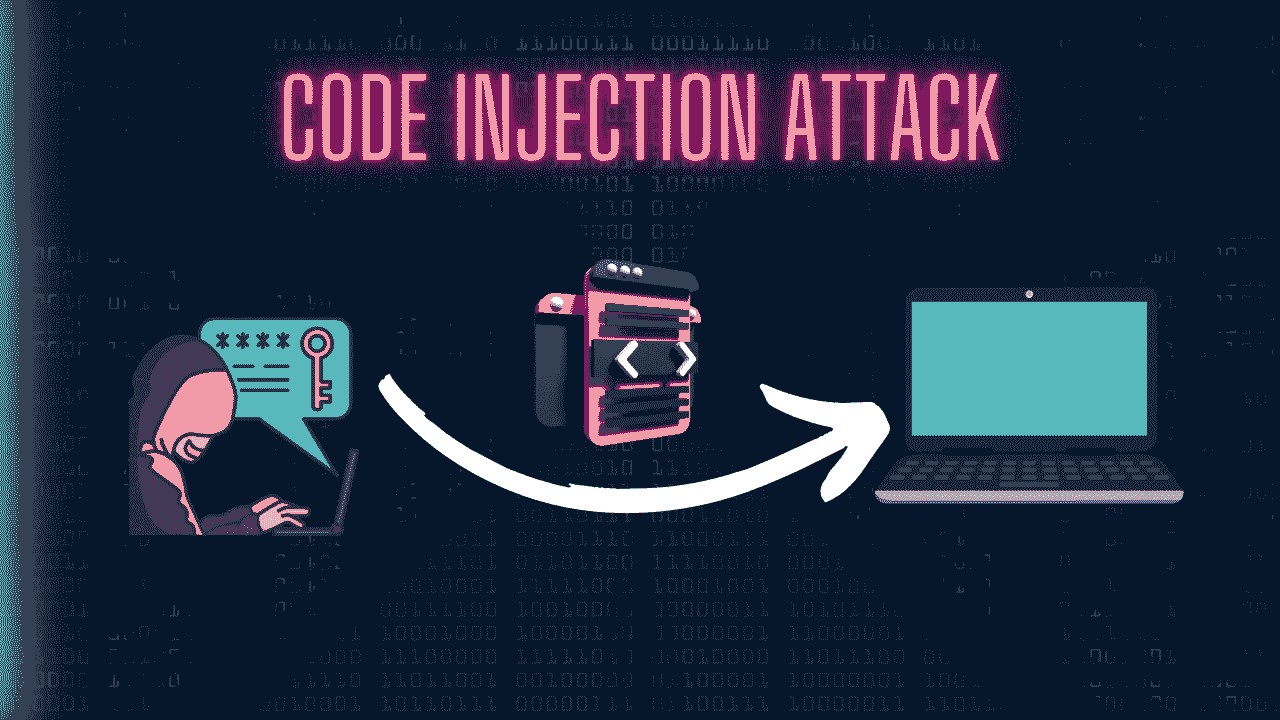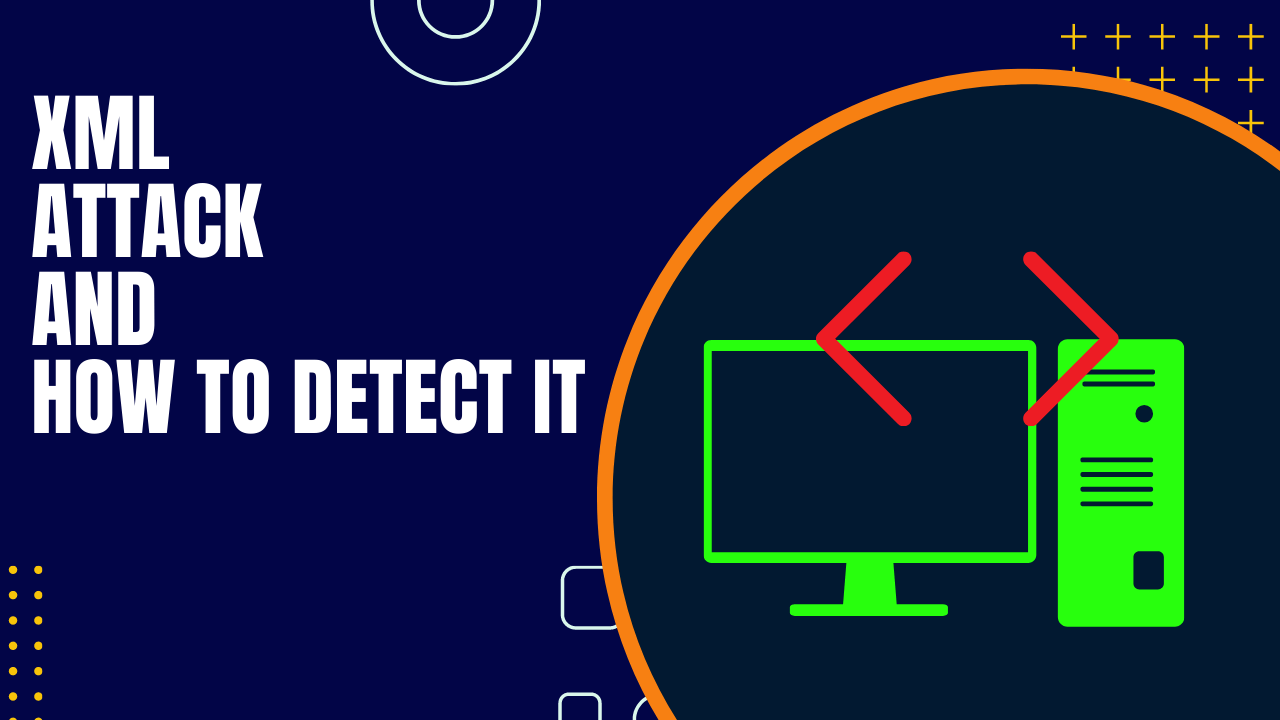In this blog, I will explain the Code Injection Attack which is one of the most important attacks done by hackers. I will tell some tips on how to prevent and detect it. So please, read the whole blog and share it with your friends. Let’s get started with a blog.
Table of Contents
- Introduction to a Code Injection Attack
- How does Code Injection Attack arise
- Impact of Code Injection Attack
- Mitigation for Code Injection Attack
- Recent Articles on Cyber Security Tools
- Related Articles on Cyber Attacks
Introduction to a Code Injection Attack
Code Injection attack also known as remote code execution (RCE), is a type of security vulnerability and attack that allows an attacker to inject malicious code into a target system or application. This attack takes advantage of the system’s or application’s failure to properly validate or sanitize user input, allowing the attacker to execute arbitrary code on the target system.
Code injection attacks can occur in various forms, but they generally involve the insertion of malicious code into a system or application in order to manipulate its behavior.
How does Code Injection Attack arise
Code injection attacks arise due to vulnerabilities in the way systems or applications handle user input. These vulnerabilities can be the result of poor coding practices, lack of input validation or sanitization, or failure to implement proper security measures. Here are some common ways code injection attacks arise:
A) Lack of Input Validation:
When an application fails to validate user input properly, it becomes vulnerable to code injection attacks. For example, if an application allows user-supplied data to be directly executed or interpreted without proper validation, an attacker can inject malicious code that gets executed by the application.
B) Improper Use of Dynamic Evaluation:
Some programming languages or frameworks provide features that allow dynamic evaluation of code. If these features are not used correctly or if user input is not properly validated before being evaluated, it can lead to code injection vulnerabilities. For example, using the “eval()” function in JavaScript or the “exec()” function in Python with unsanitized user input can result in code injection.
C) Failure to Sanitize User Input:
Input sanitization is the process of removing or encoding potentially dangerous characters or sequences from user input. If an application does not properly sanitize user input before using it in a vulnerable context, such as database queries or dynamic code execution, it can allow an attacker to inject malicious code.
D) Insecure File Inclusion:
In cases where an application includes files based on user input, such as dynamic file inclusion or template engines, inadequate input validation can lead to code injection vulnerabilities. If the application does not properly validate the file path or includes files without proper security checks, an attacker can manipulate the input to include malicious files or execute arbitrary code.
E) Third-party Libraries or Components:
Code injection attacks can also arise from vulnerabilities in third-party libraries or components used by an application. If these libraries have security flaws or are not kept up to date, an attacker can exploit those vulnerabilities to inject malicious code into the application.
It’s important to note that code injection attacks can be prevented by following secure coding practices, implementing input validation and sanitization, using prepared statements or parameterized queries, and keeping software and libraries up to date with security patches.
Regular security testing and code audits can help identify and mitigate code injection vulnerabilities before they can be exploited.
Impact of Code Injection Attack
The impact of a successful code injection attack can vary depending on the nature of the vulnerability and the system or application being targeted. Here are some potential impacts:
A) Unauthorized Access:
Code injection attacks can allow an attacker to gain unauthorized access to a system or application. This can lead to the compromise of sensitive information, such as user credentials, personal data, financial records, or intellectual property.
B) Data Manipulation or Destruction:
Attackers may use code injection to manipulate or delete data within a system or application. This can result in the loss or corruption of critical data, causing operational disruptions, financial losses, or even legal consequences.
C) Privilege Escalation:
By exploiting code injection vulnerabilities, attackers can elevate their privileges within a system. This means they can gain administrative or root-level access, allowing them to control the entire system and potentially compromise other connected systems.
D) Malware Distribution:
Code injection attacks can serve as an entry point for the distribution of malware. Once an attacker gains control over a system, they can inject malicious code that installs malware, such as viruses, ransomware, or keyloggers, on the compromised system or spread it to other connected systems.
E) Denial of Service (DoS):
In some cases, code injection attacks can be used to launch DoS attacks by injecting code that consumes excessive system resources or triggers infinite loops. This can overload the targeted system, rendering it unresponsive and disrupting its normal operation.
F) Reputation and Trust Damage:
If a code injection attack leads to the compromise of customer data or system downtime, it can significantly damage an organization’s reputation and erode customer trust. This can have long-lasting consequences, including loss of business, legal liabilities, and regulatory penalties.
G) Further Exploitation:
Successful code injection attacks can provide attackers with a foothold within a system, enabling them to conduct additional attacks. For example, an attacker may use code injection to upload web shells or backdoors, allowing them to maintain persistence and continue compromising the system even after the initial attack has been discovered.
To mitigate the impact of code injection attacks, it is crucial to implement strong security measures, such as input validation and sanitization, secure coding practices, and regular software updates. Additionally, organizations should conduct regular security assessments, and penetration testing, and monitor for any suspicious activity to detect and respond to code injection attacks in a timely manner.
Mitigation for Code Injection Attack
Mitigating code injection attacks requires a combination of secure coding practices, proper input validation and sanitization, and the implementation of security measures. Here are some mitigation techniques to help prevent code injection attacks:
A) Input Validation and Sanitization:
Implement strict input validation by validating and sanitizing all user-supplied input. Use input validation techniques such as whitelisting, blacklisting, and regular expressions to ensure that only expected and safe input is accepted. Sanitize user input by removing or encoding special characters and validating input length and format.
B) Parameterized Queries or Prepared Statements:
When interacting with databases, use parameterized queries or prepared statements instead of dynamically constructing SQL queries. This helps to prevent SQL injection attacks by separating the SQL code from user input and automatically handling proper data escaping.
C) Output Encoding:
Apply appropriate output encoding to prevent Cross-Site Scripting (XSS) attacks. Encode user-generated content before displaying it on web pages to ensure that any injected scripts are treated as harmless text rather than executable code.
D) Least Privilege Principle:
Follow the principle of least privilege, granting only the necessary permissions to each user or component of the system. Limiting the privileges reduces the potential impact of a code injection attack and minimizes the attacker’s ability to execute malicious code or access sensitive resources.
E) Secure Coding Practices:
Follow secure coding practices to minimize the risk of introducing vulnerabilities. This includes avoiding the use of eval() or similar functions that can execute dynamic code, using secure libraries and components, and properly handling errors and exceptions to prevent information leakage.
F) Security Testing and Auditing:
Regularly conduct security testing, including penetration testing and code audits, to identify and address any code injection vulnerabilities. Use automated tools and manual analysis to identify potential injection points and validate the effectiveness of implemented security measures.
G) Software Updates and Patch Management:
Keep all software, frameworks, libraries, and components up to date with the latest security patches. Regularly check for security advisories and apply patches promptly to mitigate known vulnerabilities that could be exploited for code injection attacks.
H) Web Application Firewalls (WAFs):
Implement a web application firewall that can detect and block malicious requests, including those attempting code injection attacks. WAFs can provide an additional layer of protection by inspecting incoming traffic and blocking requests that exhibit suspicious or malicious behavior.
By implementing these mitigation techniques, organizations can significantly reduce the risk of code injection attacks and strengthen the security posture of their systems and applications. However, it’s important to note that security is an ongoing process, and regular monitoring and updates are essential to stay ahead of emerging threats.
Recent Articles on Cyber Security Tools
- Dirb Command Kali Linux | Dirb: A Web-Content Scanner
- Introduction to Burp Suite | How to Download Burp Suite in Linux
- What is Tmux? | Introduction to Tmux
- Introduction to Termux | Termux Introduction
- EyeZy: How to log in to other Emails without receiving a Notification.
- Nmap Scanning Tool in Cyber Security with Nmap Cheatsheet
- WPScan Full Tutorial in 10 minutes| How to scan with WPScan
- Modules and Components of Metasploit Framework
- Data Packet Capture and Filters in WireShark
- Tshark: An Alternative for WireShark and How to use it
- SqlMap command in CyberSecurity | SQL Injection Attack Tool
- Hydra Tool Full Guide | Learn Hydra Command Tutorial
- John the Ripper Tool | How to crack the Password of Files
- Nikto Tool Web Vulnerability Scanner That Every Hacker Uses
Related Articles on Cyber Attacks
- 10 Tips for the User to Prevent from Being Hacked by Hackers
- Cookie Hijacking, How to Detect and Prevent It with Practicals
- Session Hijacking, and How to Detect and Prevent It with Practicals
- Social Engineering and its Different Types in CyberSecurity
- What is Privilege Escalation Attack, its Types, and Prevention
- KeyLogger Attack and How to Detect and Prevent It
- Eavesdropping Attack and How to Prevent it in Ethical Hacking
- Drive-By Attack and How to Prevent it in Ethical Hacking
- Steganography Attack and How to Hide and Send Data in Image
- What is SQL Injection, its Type, Prevention, and how to perform it
- Broken Access Control Full Guide OWASP 10 in Ethical Hacking
- Insecure Deserialization in Ethical Hacking OWASP 10
- Email Header Injection | How to Send an Email to an Unknown Person
- DOS Attack (Denial of Service) and Prevent or mitigate with it
- Sensitive Data Exposure Vulnerability OWASP10 in Ethical Hacking



